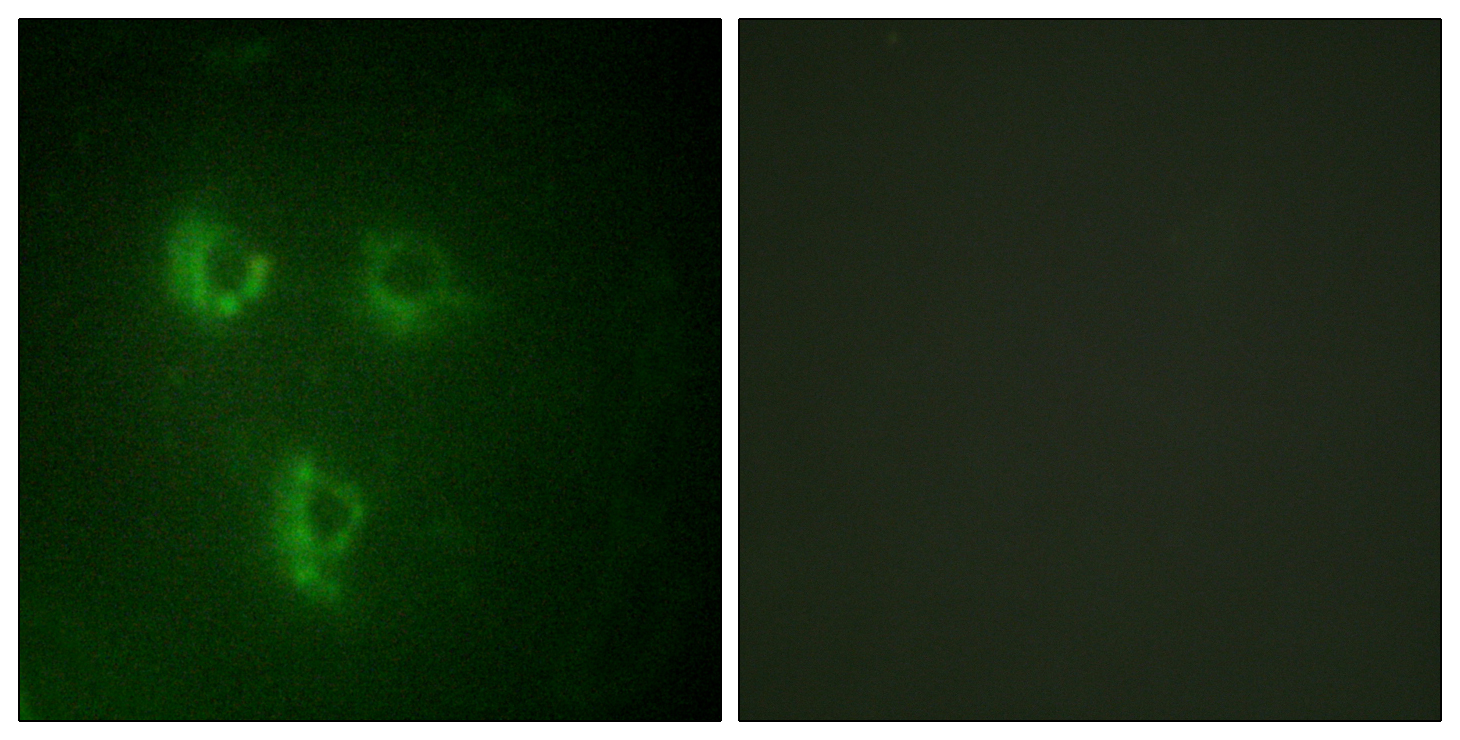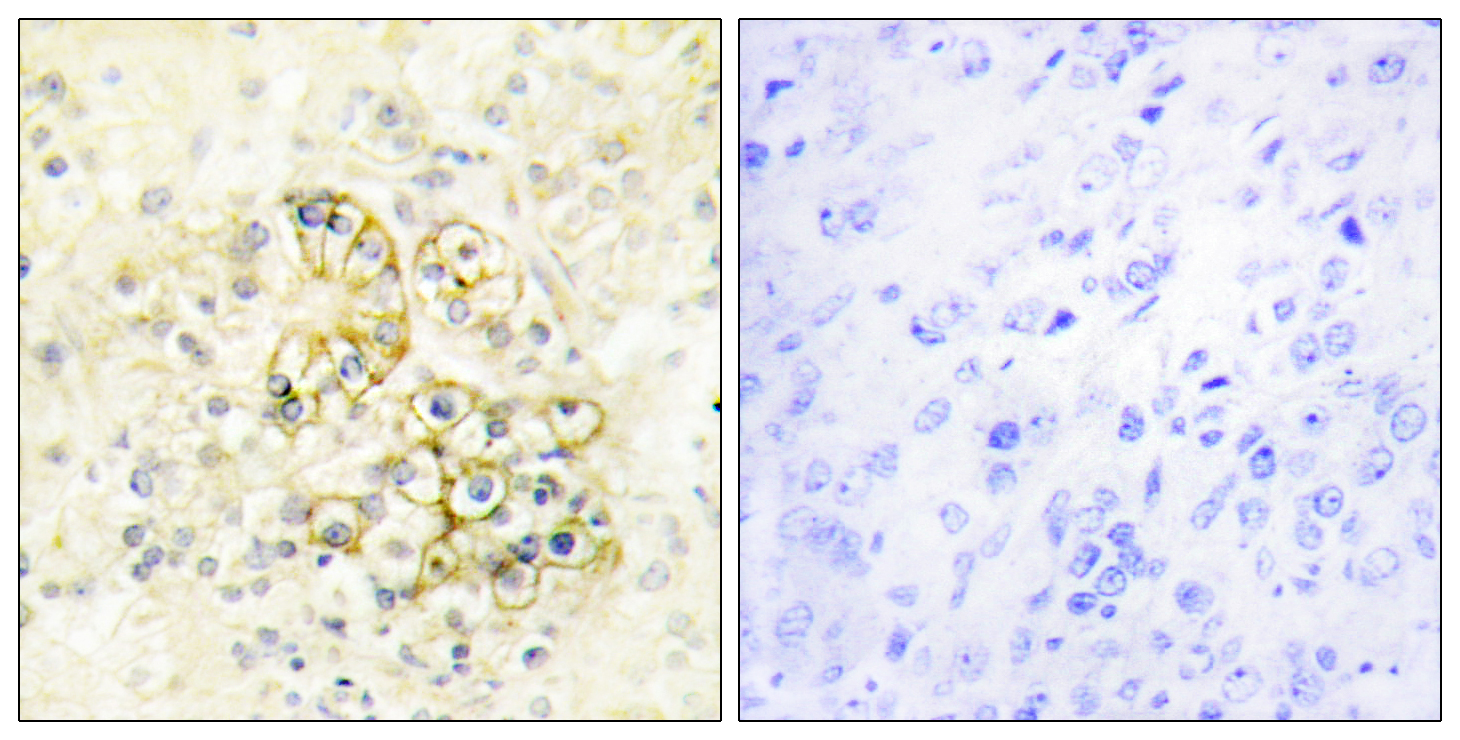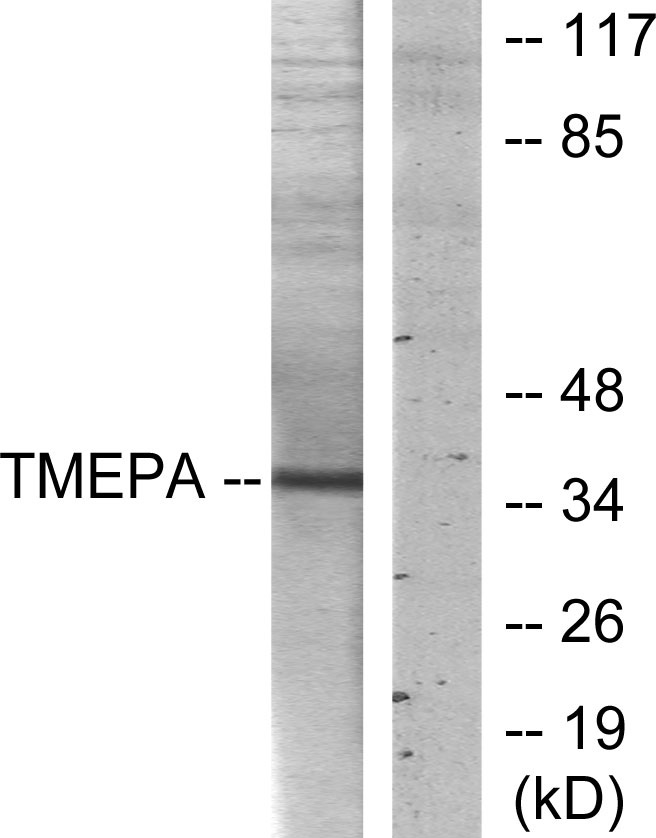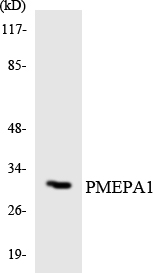PMEPA1 Polyclonal Antibody
- Catalog No.:YT3800
- Applications:WB;IHC;IF;ELISA
- Reactivity:Human;Mouse
- Target:
- PMEPA1
- Gene Name:
- PMEPA1
- Protein Name:
- Transmembrane prostate androgen-induced protein
- Human Gene Id:
- 56937
- Human Swiss Prot No:
- Q969W9
- Mouse Swiss Prot No:
- Q9D7R2
- Immunogen:
- The antiserum was produced against synthesized peptide derived from human TMEPA. AA range:101-150
- Specificity:
- PMEPA1 Polyclonal Antibody detects endogenous levels of PMEPA1 protein.
- Formulation:
- Liquid in PBS containing 50% glycerol, 0.5% BSA and 0.02% sodium azide.
- Source:
- Polyclonal, Rabbit,IgG
- Dilution:
- WB 1:500 - 1:2000. IHC 1:100 - 1:300. IF 1:200 - 1:1000. ELISA: 1:20000. Not yet tested in other applications.
- Purification:
- The antibody was affinity-purified from rabbit antiserum by affinity-chromatography using epitope-specific immunogen.
- Concentration:
- 1 mg/ml
- Storage Stability:
- -15°C to -25°C/1 year(Do not lower than -25°C)
- Other Name:
- PMEPA1;STAG1;TMEPAI;Transmembrane prostate androgen-induced protein;Solid tumor-associated 1 protein
- Observed Band(KD):
- 37kD
- Background:
- This gene encodes a transmembrane protein that contains a Smad interacting motif (SIM). Expression of this gene is induced by androgens and transforming growth factor beta, and the encoded protein suppresses the androgen receptor and transforming growth factor beta signaling pathways though interactions with Smad proteins. Overexpression of this gene may play a role in multiple types of cancer. Alternatively spliced transcript variants encoding multiple isoforms have been observed for this gene. [provided by RefSeq, Dec 2011],
- Function:
- domain:The WW-binding motifs mediate interaction with NEDD4.,induction:By androgen.,similarity:Belongs to the PMEPA1 family.,subunit:Interacts with the WW domains of NEDD4.,tissue specificity:Highest expression in prostate. Also expressed in ovary.,
- Subcellular Location:
- Early endosome membrane; Single-pass membrane protein. Golgi apparatus membrane; Single-pass membrane protein.
- Expression:
- Highest expression in prostate. Also expressed in ovary.
Unraveling the immune landscape and therapeutic biomarker PMEPA1 for oxaliplatin resistance in colorectal cancer: A comprehensive approach BIOCHEMICAL PHARMACOLOGY Zhengguang Zhang WB,IHC Human,Mouse 1:1000 colorectal cancer (CRC) tissue,HCT116R cell-Xenograft HCT116 cell
- June 19-2018
- WESTERN IMMUNOBLOTTING PROTOCOL
- June 19-2018
- IMMUNOHISTOCHEMISTRY-PARAFFIN PROTOCOL
- June 19-2018
- IMMUNOFLUORESCENCE PROTOCOL
- September 08-2020
- FLOW-CYTOMEYRT-PROTOCOL
- May 20-2022
- Cell-Based ELISA│解您多样本WB检测之困扰
- July 13-2018
- CELL-BASED-ELISA-PROTOCOL-FOR-ACETYL-PROTEIN
- July 13-2018
- CELL-BASED-ELISA-PROTOCOL-FOR-PHOSPHO-PROTEIN
- July 13-2018
- Antibody-FAQs
- Products Images

- Western Blot analysis of various cells using PMEPA1 Polyclonal Antibody diluted at 1:500
.jpg)
- Western Blot analysis of HT29 cells using PMEPA1 Polyclonal Antibody diluted at 1:500

- Immunofluorescence analysis of HUVEC cells, using TMEPA Antibody. The picture on the right is blocked with the synthesized peptide.

- Immunohistochemistry analysis of paraffin-embedded human prostate tissue, using TMEPA Antibody. The picture on the right is blocked with the synthesized peptide.

- Western blot analysis of lysates from HT-29 cells, using TMEPA Antibody. The lane on the right is blocked with the synthesized peptide.

- Western blot analysis of the lysates from HeLa cells using PMEPA1 antibody.


